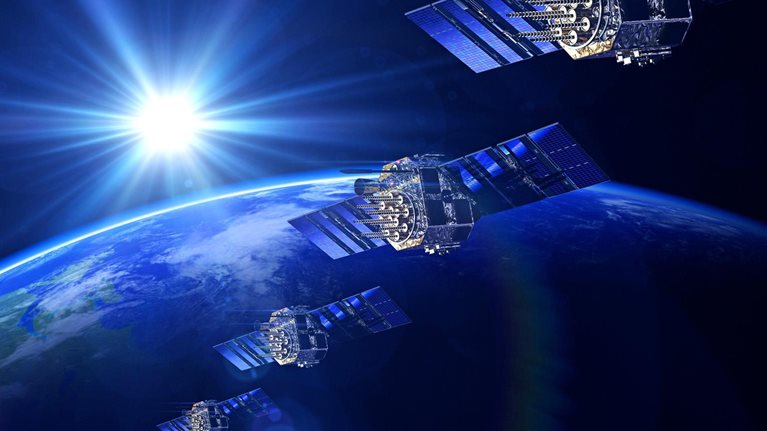Private-sector funding in space-related companies topped $10 billion in 2021—an all-time high and about a tenfold increase over the past decade. But this surging investment, which has fueled a wave of innovation, is just one factor transforming the space sector. In another big shift, investors are now directing more funds to projects involving lunar and beyond orbital regimes,1 which have traditionally attracted less attention than regimes at lower altitudes, and all signs point to continued growth.
To understand what’s happening, let’s begin by looking at the evolution of space investment. Historically, much of the private funding—as well as government activity—has focused on satellite communications, including for purposes such as GPS and television coverage. Initially, these ventures involved satellites in medium-Earth orbit (MEO) or geosynchronous equatorial orbit (GEO).2 Satellites in GEO appear to be stationary, since their 24-hour orbital cycle is the same as the Earth’s, and their coverage is limited to specific geographic regions.
Over the past five to ten years, more space investment has been flowing to ventures in low-Earth orbit (LEO)—both for satellite communications and other objectives. Satellites in LEO, which sit closer to the Earth than their MEO and GEO counterparts, are ideal for enabling high-speed, low-latency communications. They are also typically smaller and much less expensive—important features, considering that companies must often launch multiple LEO satellites in constellations to ensure adequate coverage.3 Beyond satellite-related ventures, investments related to LEO have gone to ventures associated with space stations (the International Space Station operates at this altitude) and space travel, among others. Overall, about 60 to 70 percent of space-company funding is now directed at LEO endeavors.
The growing popularity of LEO is easy to understand. Launch costs are lower for this orbit than for GEO or MEO, giving more companies and nations access to space, and LEO can also accommodate smaller, cheaper spacecraft. What’s more, NASA has been encouraging commercial activity in LEO.4 (There has also been interest in suborbital ventures because of the expected growth in space tourism and as a means of later advancing to higher orbits.)

R&D for space: Who is actually funding it?
While LEO ventures still lead in funding, our research suggests that the space industry is on the cusp of another shift (exhibit). Over the past few years, investment in lunar and beyond initiatives has been on a steady upward trajectory, driven by both government missions and commercial interest. These initiatives now account for about 10 to 15 percent of total private investment in space-related companies—around $1 billion—up from well under 5 percent only a decade ago. In 2021, private funding for lunar and beyond regimes exceeded funding for suborbital ventures for the first time.

A wide range of companies are pursuing missions in lunar and beyond orbits. Their areas of focus include spacecraft components and technologies, propulsion, mission services, launch vehicles, in-space transportation, communications, mining, infrastructure, and robotics. Some of these ventures involve nascent areas—for example, mining rare materials in space—while others focus on developing advanced technologies, such as propulsion methods, that are critical to expanding the use of lunar and beyond orbits.
These players, and all other participants in the space ecosystem, could benefit from considering the following questions as activity intensifies in more distant orbits:
- Will overall funding continue to grow at a rapid clip or might funding for lunar and beyond initiatives simply take investment share from suborbital, LEO, or MEO- or GEO-focused segments?
- Given that companies pursuing lunar and beyond projects will likely require longer time horizons to realize their ambitions, will it be more difficult to attract increased capital? What types of investors will be willing to provide the capital?
- Which technologies will be critical for lunar missions (and thus potentially serve as focus areas for established space companies or spawn additional start-ups)?
- What governance is needed for orbits in lunar and beyond?
It is critical to address these issues quickly because we are at an inflection point where new orbits and opportunities are within reach. Prompt attention, combined with the continued development of technologies and business models, will set the stage for future missions and help shape our evolving activity in space.


